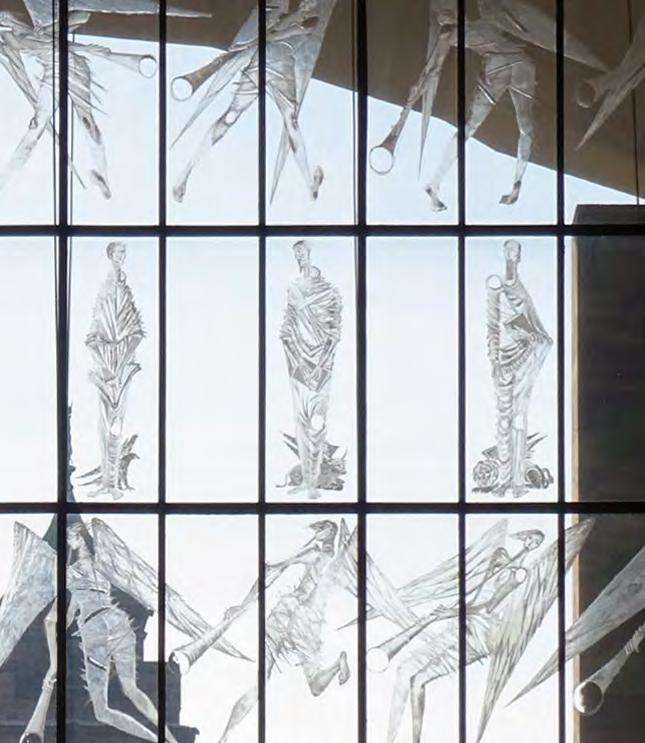UNDERSTANDING THE DEVELOPMENT OF THE PLACE
2.1.8 A PLAIN JEWEL CASKET The construction history of the new cathedral was well documented as it was built and there is a large number of construction drawings and detailed images in the archives. Spence himself described the new cathedral as a “plain jewel casket with many jewels inside”11 and the ‘casket’ itself was predominantly constructed of concrete. Structurally, the building rests on a large concrete foundation into which 671 steel piles were inserted to pin the foundation to the sandstone bedrock beneath. From the foundations, huge walls of concrete, finished in blocks of sandstone, rise to the roof, which is a large concrete shell. Between the internal roof and the shell, there is a void in which tie-beams cross the nave. Further buttressing to the roof is provided by the sawtooth walls. The baptistery roof is an orthogonal structure and three concrete beams that lie directly beneath the eaves take the weight of the roof, allowing less weight to rest on the curving baptistery wall beneath. The porch roof, the most outwardly visible concrete element of the building, is supported by a large concrete frame that has its base beneath the west window – which itself is stiffened by a series of high tensile steel cables. The roof canopy is 9cm thick and it rests on a pair of stone-clad concrete walls and four circular columns that again, are concrete with stone cladding. The chapels rely on reinforced concrete construction and are of a circular plan form that features fins inset with glass. The concrete on both chapels is clad in Westmoreland slate fixed in bronze.
Reinforced concrete construction on site
Hoisting the precast columns into place with extensive scaffolding
Within the nave itself, 14 slender columns support the geodesic roof, which is constructed of concrete ribs inset with timber slats.
11
Spence, Phoenix at Coventry, P62.
37














